Oil from Khuzestan Province, in southwest Iran, once lit up cities all over the world. Eighty percent of Iran’s oil and gas reserves are in Khuzestan—the first place in the Middle East where oil was discovered. Yet in recent years climate change and environmental degradation have resulted in the displacement of many of the province’s inhabitants. In the summer of 2021, during the worst drought in fifty years, temperatures topped 122°F. Those conditions, combined with government mismanagement, led to dust storms and water shortages, provoking violent protests. Hur al-Azim, a Mesopotamian marshland known as the Garden of Eden, is now barren and laden with harmful waste. The Indigenous population living around Shadegan International Wetlands has staged protests to call attention to evaporating water troughs and drying pastures. Local herders, farmers, and fishermen must deal with receding rivers and slowly disappearing lagoons. The photographs on the following pages were taken in December 2020 and September 2021. They document a part of Iran and Iranian society that rarely makes the headlines: a region of desertified land and polluted water; a population whose livelihoods are threatened by environmental forces outside their control. A region that oil once made rich is being slowly devastated by the effects of the world’s addiction to fossil fuels.
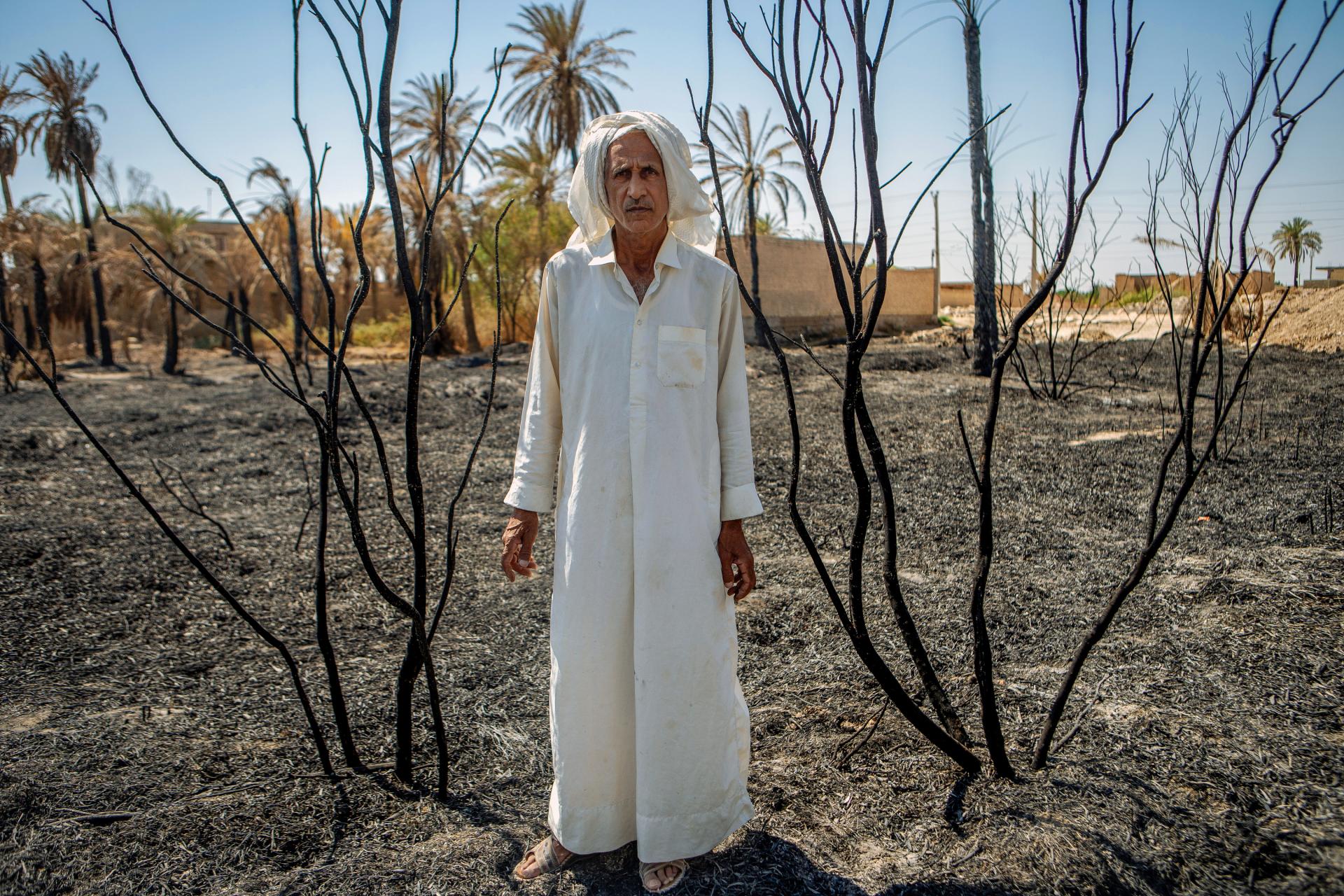
Above: Abbas Bohrani stands in front of burned trees in his palm grove on Minoo Island near the Persian Gulf. Drought and extreme temperatures have led to more fires in recent years. “When the palm trees caught fire, I called the fire brigade. But the whole grove had already burned by the time they arrived, and only a few remained out of hundreds. Like my children, these palms were with me for about thirty years, but all of them perished in the fire.”
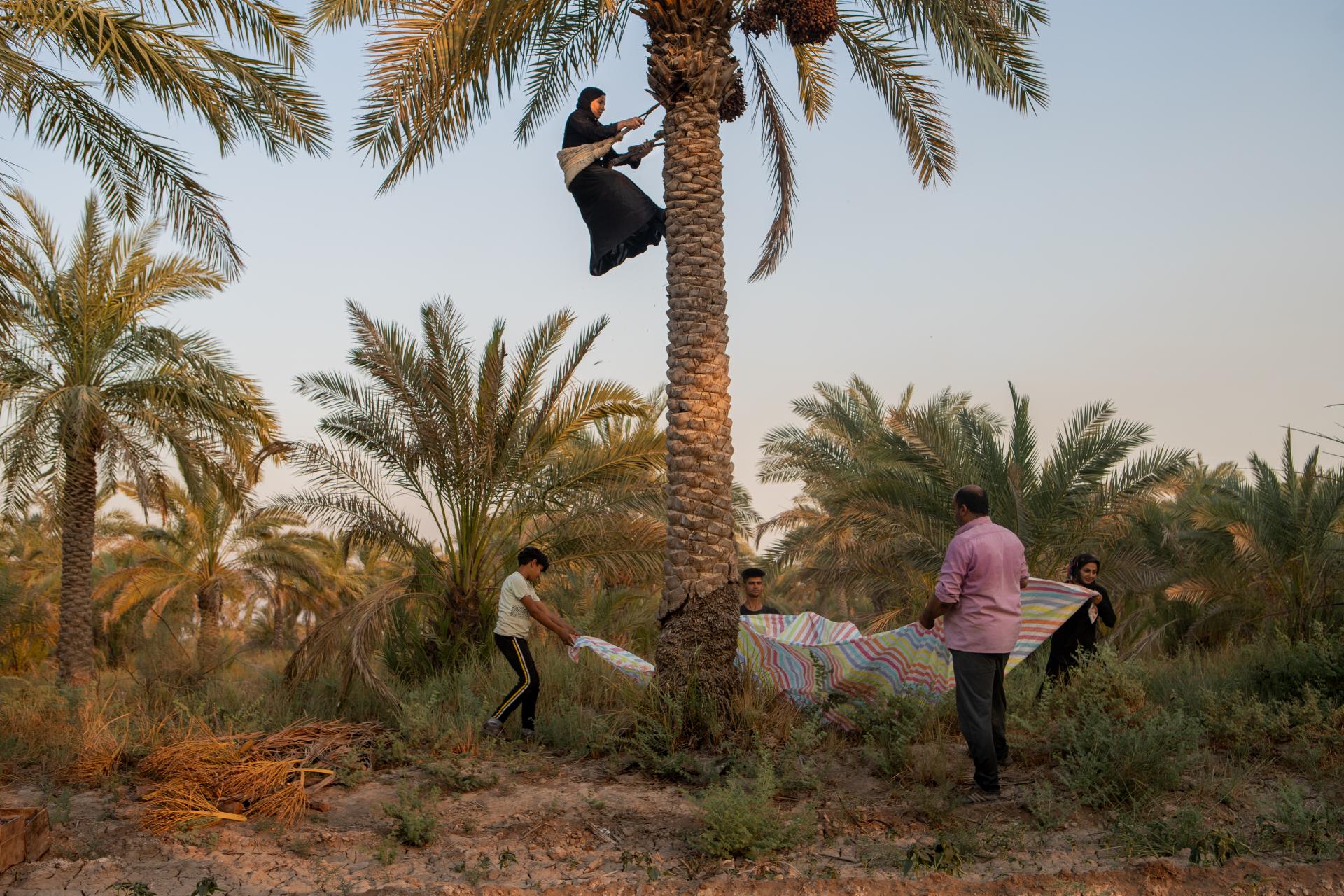
Above: The Bawi family harvests date palms in their grove in the village of Oloveh. According to Abo Ali Bawi, “the fruit of many palm trees has been halved” because of water shortages. Many streams in the town have dried up. Palms need to be watered at least ten times a year, but the family could water them only three times in 2021.
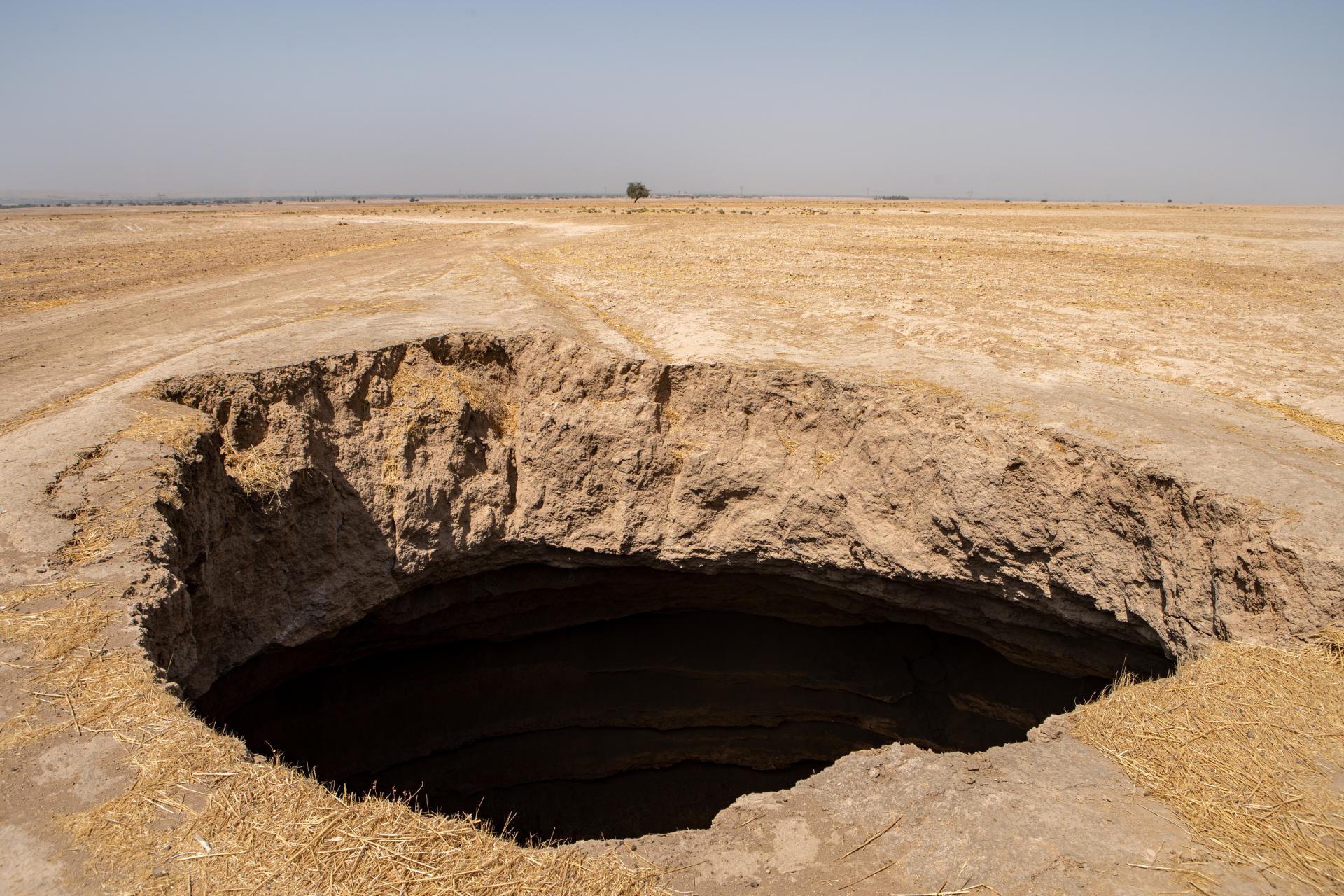
Above: Drought and excessive groundwater extraction have caused land subsidence and sinkholes, like this one near the village of Dasht-e Bozorg.
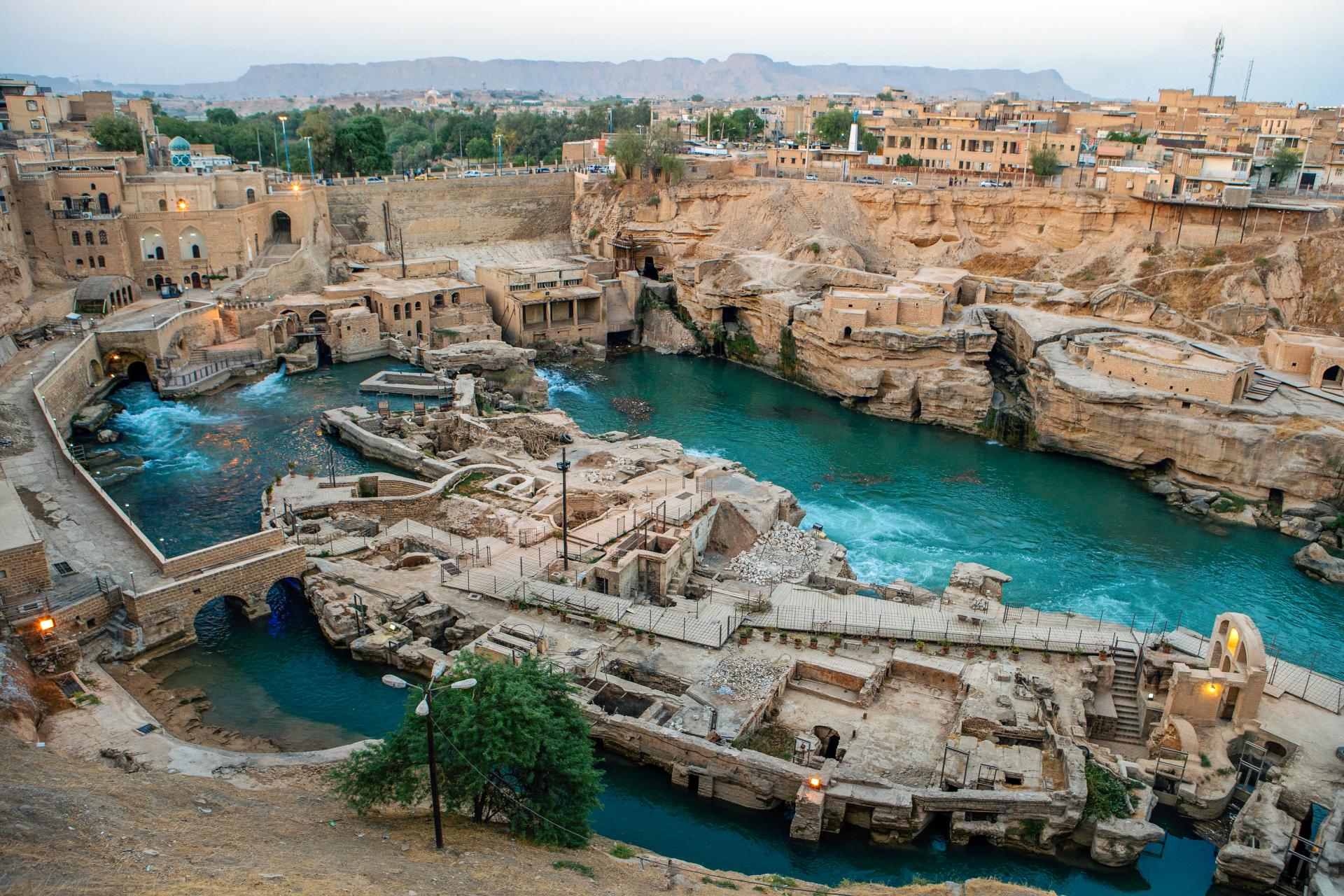
Above: Described by UNESCO as “a masterpiece of creative genius,” the Shushtar Hydraulic System dates back more than two thousand years to the Achaemenid and Sassanid eras. In recent years, salt sediment has damaged the system because of the Karun River’s increasing salinity—another effect of drought.
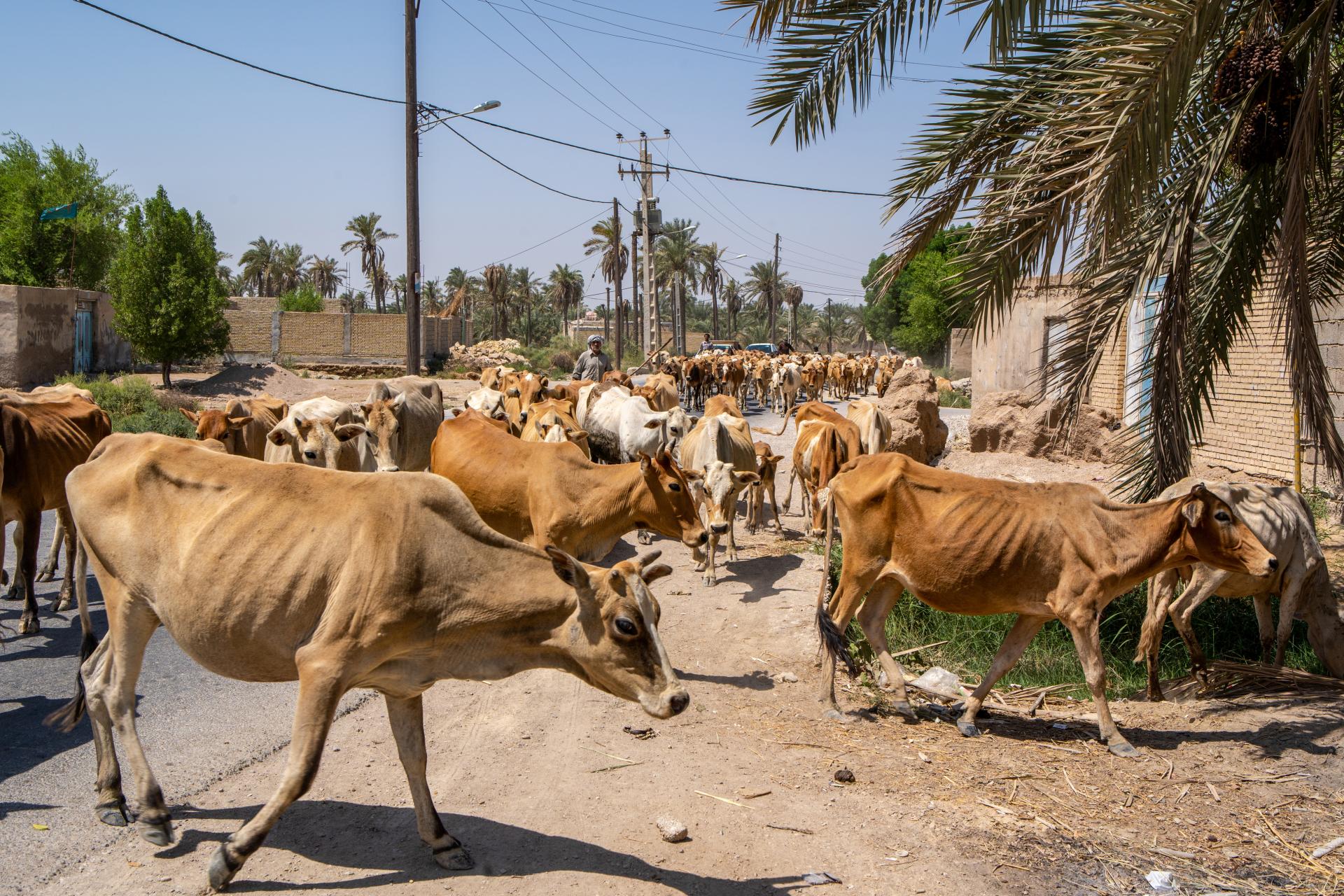
Above: People living near the Shadegan Wetland rely on water for their livelihoods, whether to irrigate crops or provide water to livestock. Droughts, pollution, and extreme heat have devastated crops and herds and led to blackouts.
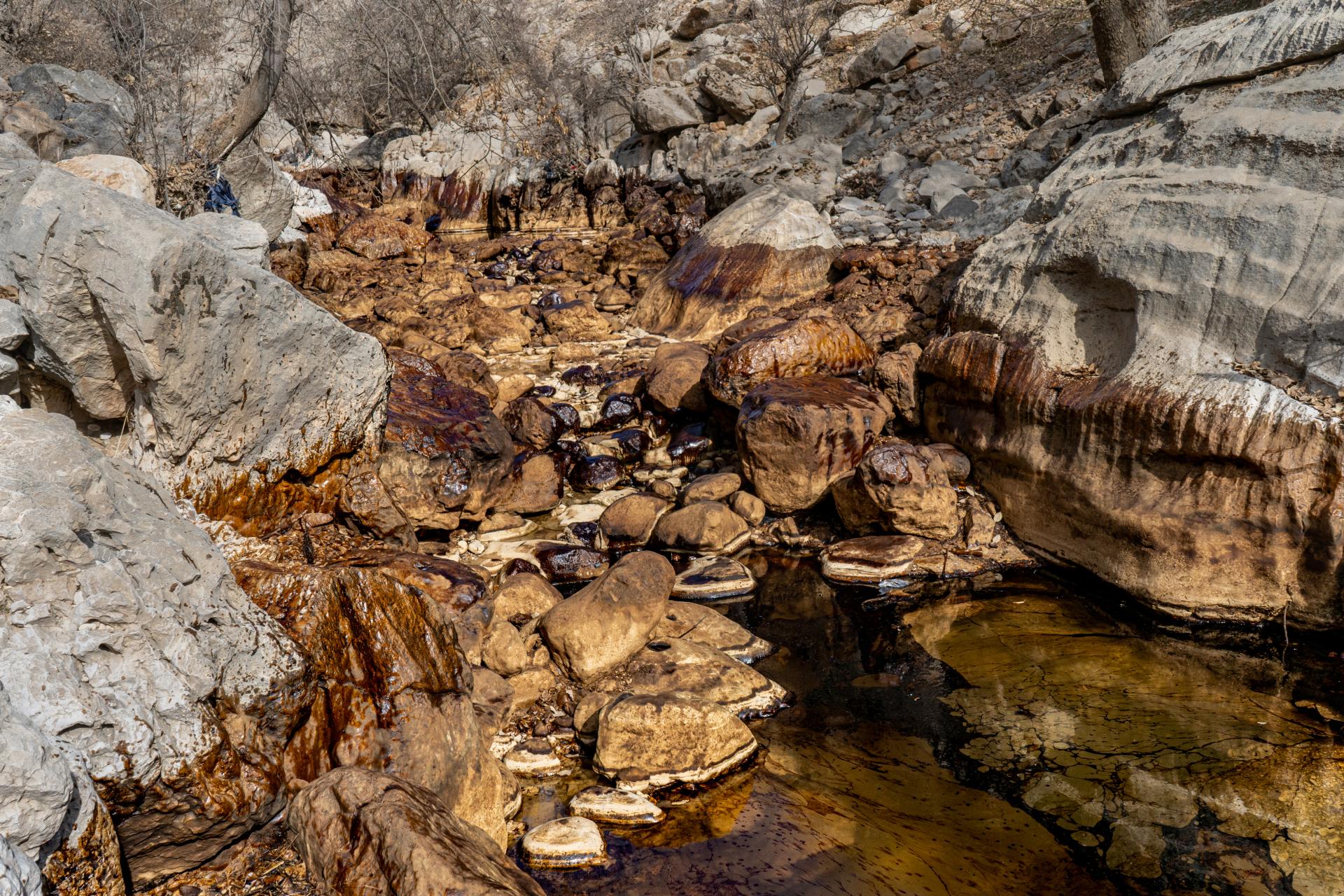
Above: A landslide in the Zagros Mountains ruptured an oil pipeline. A river of oil flowed into nearby valleys and farms. After the winter rains, the contaminated soil polluted springs, wells, and groundwater aquifers.
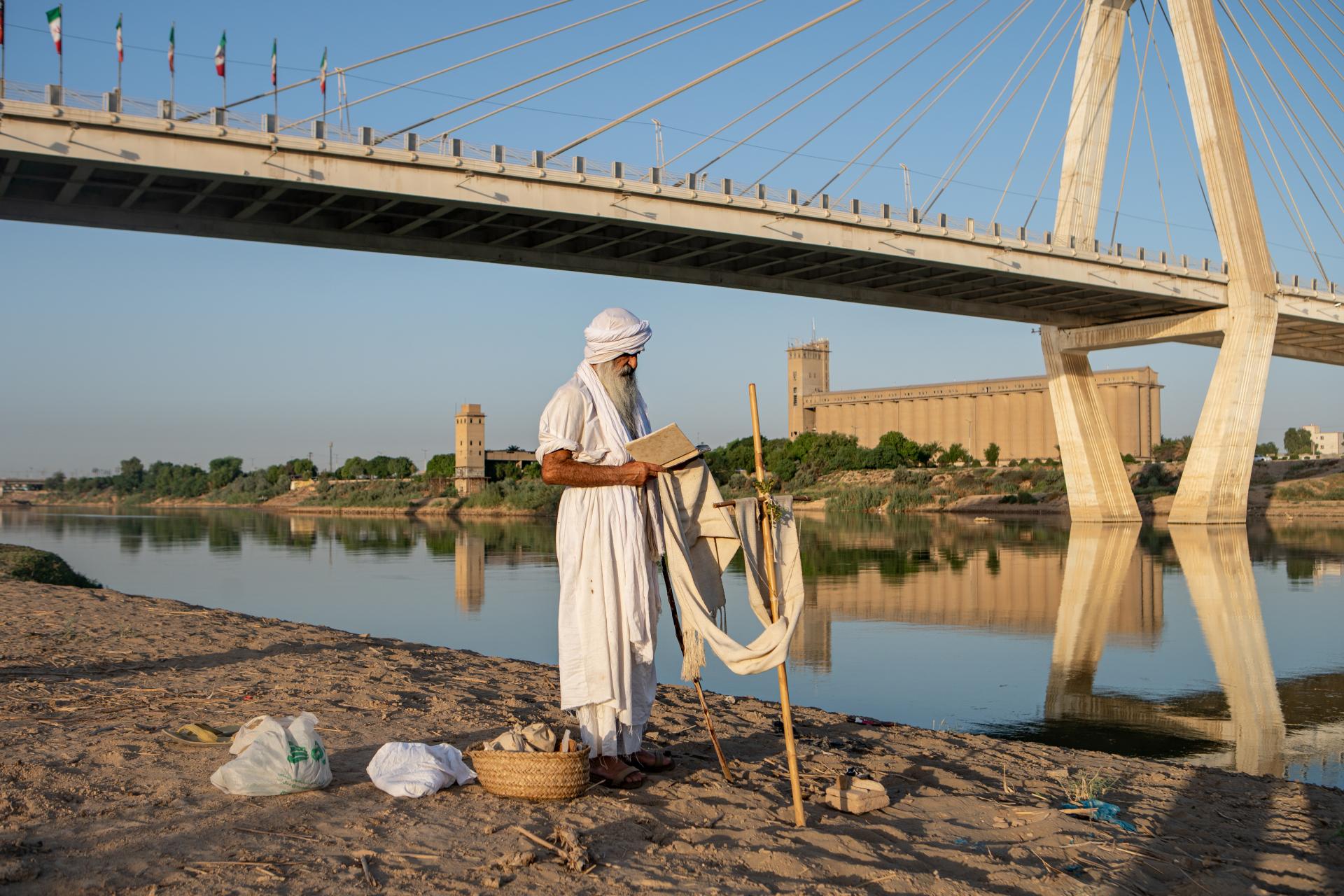
Above: Genzova Choheili, a member of the Mandaean community, prays on the banks of the Karun River. The Karun is the main ritual site of Iran’s Mandaeans; for centuries they have been baptized here after major life events—birth, marriage, illness. The banks of the river offer a rare respite to all the inhabitants of Ahvaz, the city with the worst air pollution in the world. But the Karun is now in decline because of overexploitation, droughts, and inefficient dams.
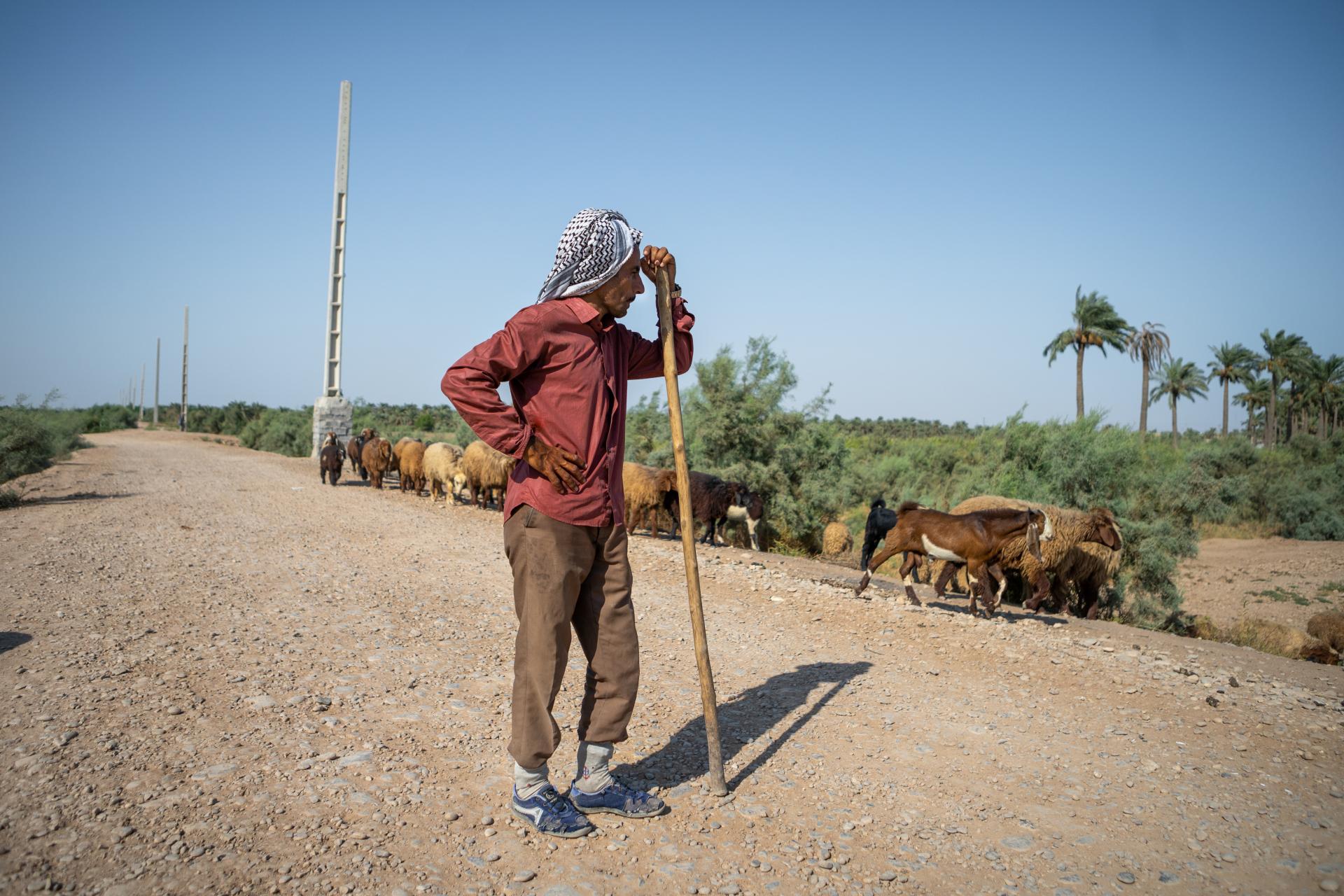
Above: Ali Salemi and his son Hussain herd sheep along a small stream of the Karun River, which runs through the fields and smells strongly of sewage. Ali says, “I lost five sheep to contaminated water this year.” The Karun is the largest river basin in Iran, but its water quality becomes dangerously bad during the dry season.
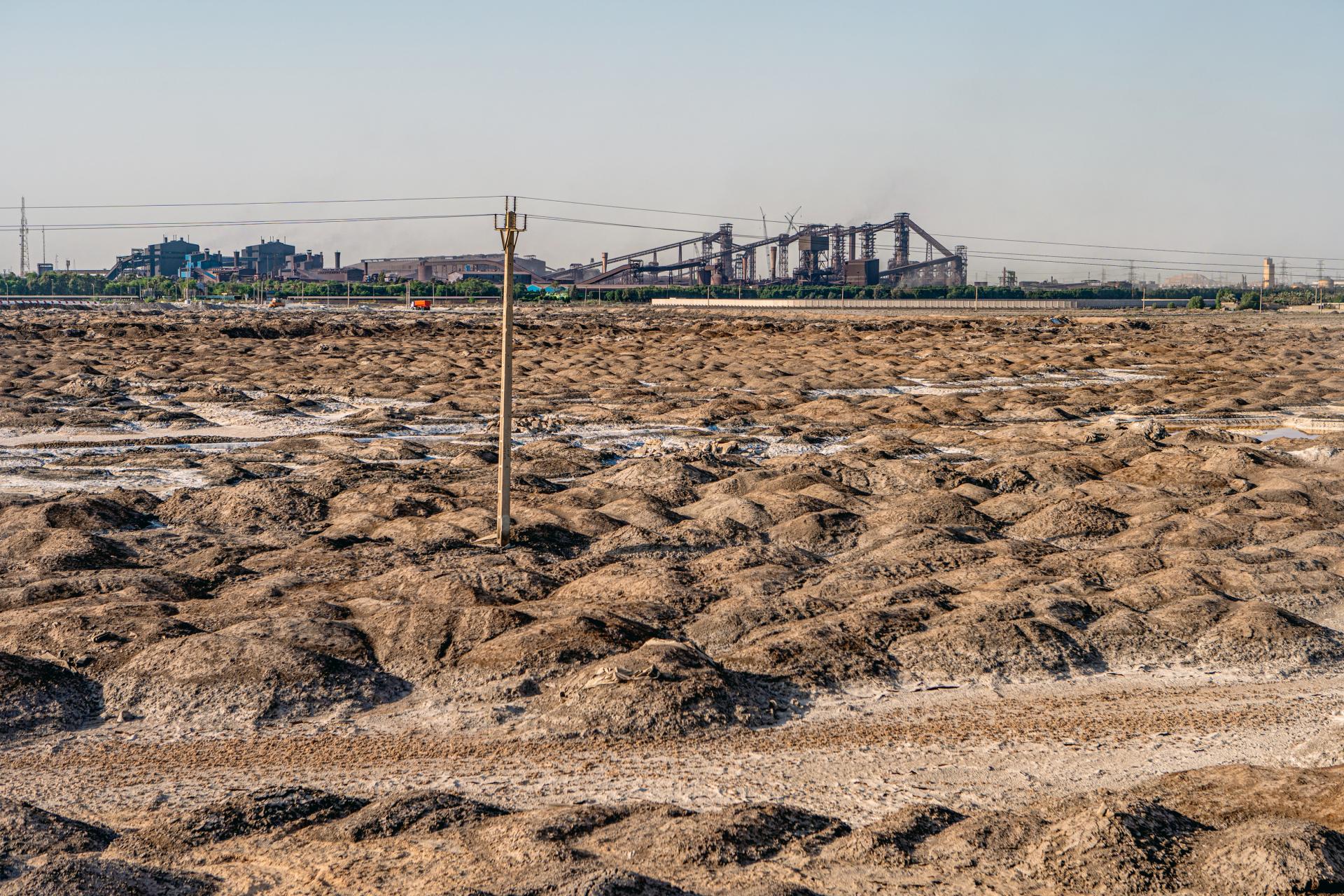
Above: Industrial and urban wastewater discharges into the Shadegan Wetland. The marshes there, at the head of the Persian Gulf, have long been used for fishing and wildlife conservation, but they have been severely damaged in recent years by drought and oil pollution.
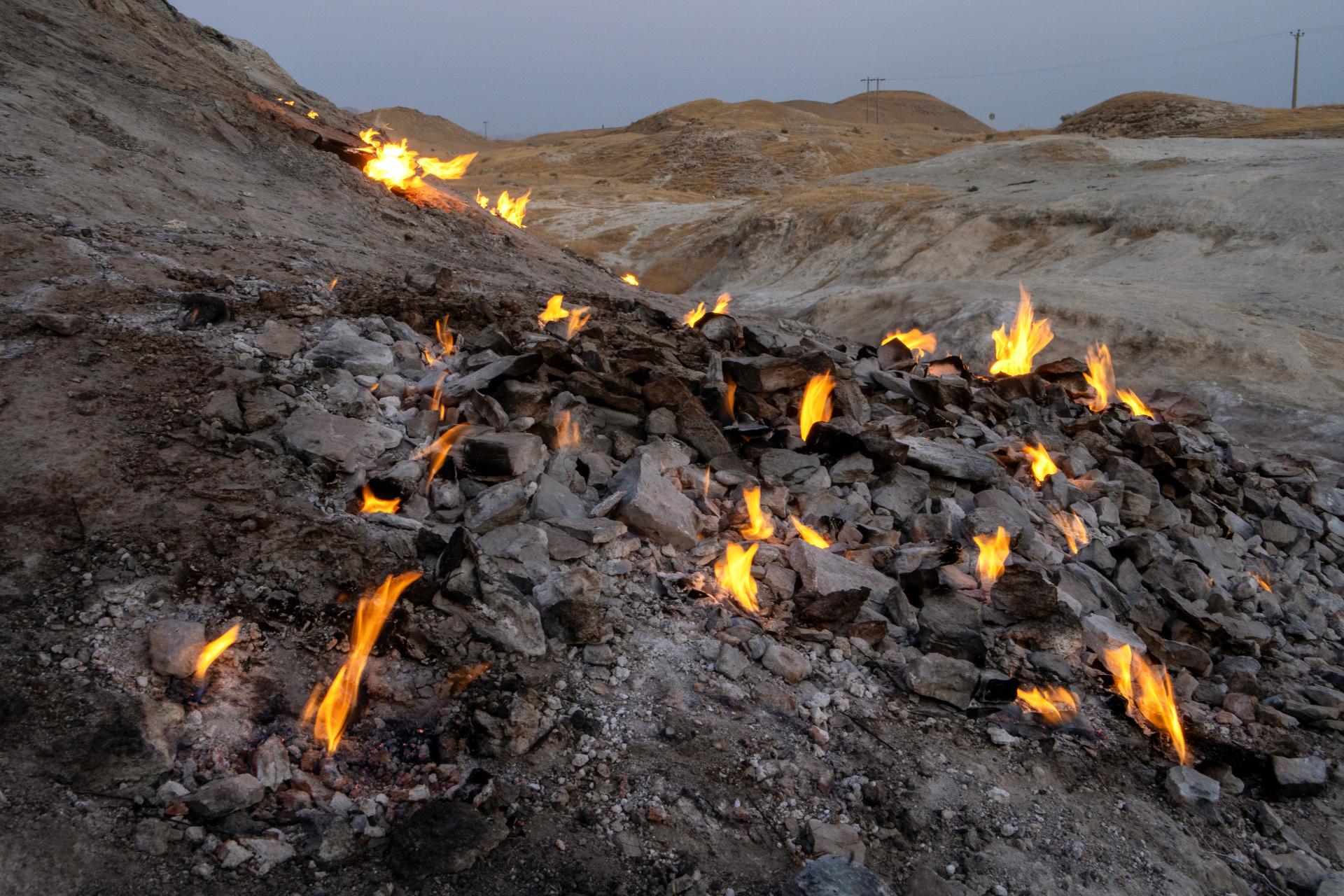
Above: Tashkooh (“burning mountain”) is constantly ablaze. Its fires are caused by the diffusion of natural gas through the cracks in the ground. Khuzestan Province has some of the world’s largest crude-oil and natural-gas reserves, but its land has been ruined by war, mismanagement, and climate change.
Please email comments to [email protected] and join the conversation on our Facebook page.
Previous Story
Peace in Tigray?
Next Story
Listening to the Synod
